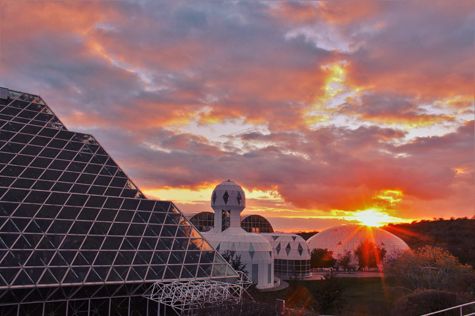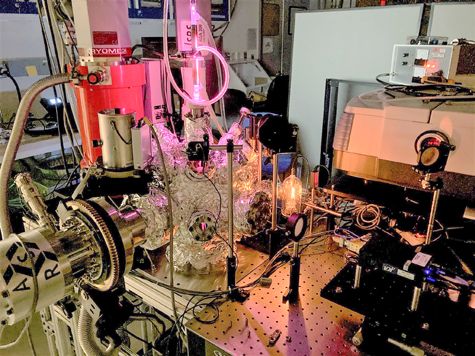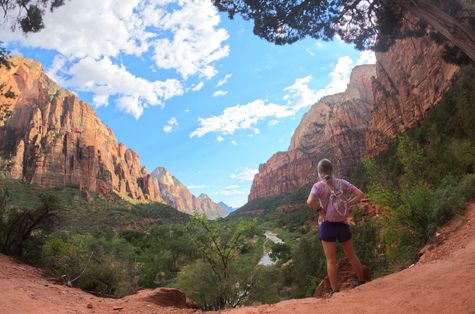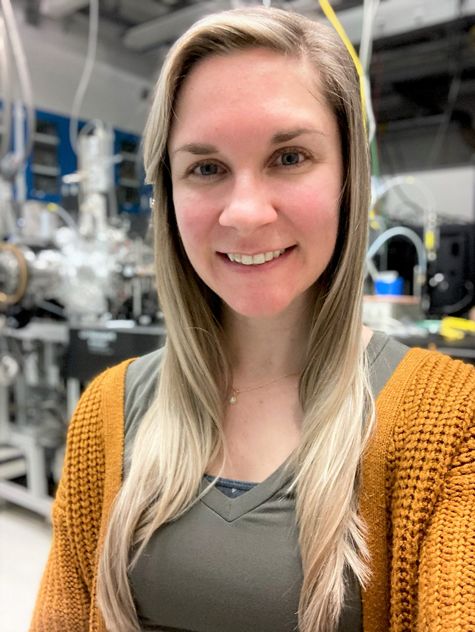Early Career Scientist Spotlight
Dr. Katarina Yocum (she/her/hers)
Astrochemist
Astrochemistry Laboratory (691)
What science questions do you investigate?
My research focuses on the following questions:
- How does volatile matter form and evolve during star and planet formation?
- Can life-fostering ingredients form before planets form?
- How do ice (solid volatile matter; not just water!) surface reactions contribute to the gas-phase composition in the early stages of star and planet formation?
The answers to these questions provide informational pieces to a larger puzzle of how our solar system formed and why life can exist here. This is something that many people think about – not just scientists! These questions excite me because there is so much information that we simply do not know about the solar system, and I enjoy trying to fill in the gaps.
What do you enjoy the most about your job?
From a young age, I constantly wondered ‘How did the Earth form, and how did life get here?’ Little did I know there are actual scientific theories of these processes! The thing I enjoy most about my job is that I conduct scientific research to help answer these questions. Most people go to work to perform the same tasks each day, but as a research scientist I am always learning something new and figuring out how to answer questions that have never been answered before. This makes my career unique and exciting!
The second-best part is traveling!

Credit: Katarina Yocum
Tell us about the research projects you are currently working on.
I work in the SubLIME Laboratory. SubLIME stands for Sublimation of Laboratory Ice Millimeter/submillimeter Experiment (PI – Stefanie Milam, code 691). This is just a fancy way to say we create a miniature comet in a vacuum chamber and use a miniature telescope to look at the gases ejected from the comet. (See below for more information about a typical experiment!) My supervisor, Stefanie, and I built this lab when I was a graduate student, and I completed the last chapter of my dissertation at GSFC using the new setup! The SubLIME lab was built in the beginning of February 2021, and I defended my dissertation in January 2022. Building this lab during the pandemic was very challenging, especially because GSFC was mostly shut down. We faced several setbacks, but we are finally operating at normal capacity and our recent data is very exciting. Stefanie came up with the idea for this project when she was a graduate student several years ago and she is so excited to finally see it become a reality.
SubLIME serves as an experimental model for gas-phase, remote-observational data collected with millimeter/submillimeter telescopes/arrays such as the Atacama Large Millimeter Array (ALMA) located in Chile. SubLIME covers the same spectral frequencies as ALMA (and other telescopes) and our data can be directly compared with observations of comets, planetary atmospheres, and interstellar clouds. We also use infrared spectroscopy to study ice-phase chemistry and those IR spectra can be compared to JWST observations. Our goal is to attempt to explain why astronomers detect specific chemical abundances and ratios in the varying physical conditions of space.
I also recently became the project manager for an Early Career Initiative (ECI) project called THSiRU – Terahertz Heterodyne Spectroscopy for in situ Resource Utilization (PI – Berhanu Bulcha, code 555). This is a low Technology Readiness Level (TRL) instrument developed to analyze water and other volatiles in the lunar regolith to inform astronauts where (or where not) to find water on the Moon.
What does a typical day at work look like for you?
Every day is different! My activities range from creating an astrophysical environment inside of a vacuum chamber to public outreach. Some common tasks include building vacuum setups and gas lines, programming, calibrating instruments, soldering, seeking quotes for new equipment, having lots of fruitful science conversations, reading literature, and of course, technical writing.
Typical experimental procedures involve creating an extremely cold surface at 10 K (-458°F) in a vacuum chamber with a pressure that is about 11 orders of magnitude lower than the standard room pressure on Earth. I form an icy sample on the cold surface which usually includes small molecules such as water (H2O) and carbon monoxide (CO). I then expose the sample to a specific dose of ultraviolet photons to experimentally create an environment similar to the surface of a comet in the outskirts of the solar system. Over time, this photolysis process builds larger molecules, and my job is to figure out which new products form and in what quantities. I can then compare my results to telescope observations of comets to understand the physical and chemical history of the solar system. These experiments typically are very long, upwards of 8-15 hours.

Credit: Katarina Yocum
What is one thing you wish the public understood about your field of work?
Science is HARD; communication is harder! Therefore, it takes a long time to understand and communicate scientific results. Most of the time, scientists realize they are wrong before they are right, so it is important to persevere through setbacks.
What early career advice do you have for those looking to do what you do?
Always pursue your passion and build a large, diverse professional network. Science cannot be done by a single person. Lastly, make sure you are comfortable and happy in your career. For example, if someone is making you feel like you don’t belong, move on to somewhere better! Everyone deserves to be happy.
What do you like to do in your free time?
I have lots of hobbies! I love art of all forms, especially music. I think my favorite hobby is meeting new people, followed by dancing, traveling/exploring new places (especially new cities and national parks), hiking, photography, and trying new yummy foods.

Credit: Katarina Yocum
Biography
Home Town:
Hershey, PA
Undergraduate Degree:
B.S. Summa Cum Laude in Chemistry, Astronomy minor, Kutztown University of Pennsylvania, Kutztown, PA
Post-graduate Degrees:
Ph.D. Physical Chemistry, University of Wisconsin-Madison, Madison, WI

